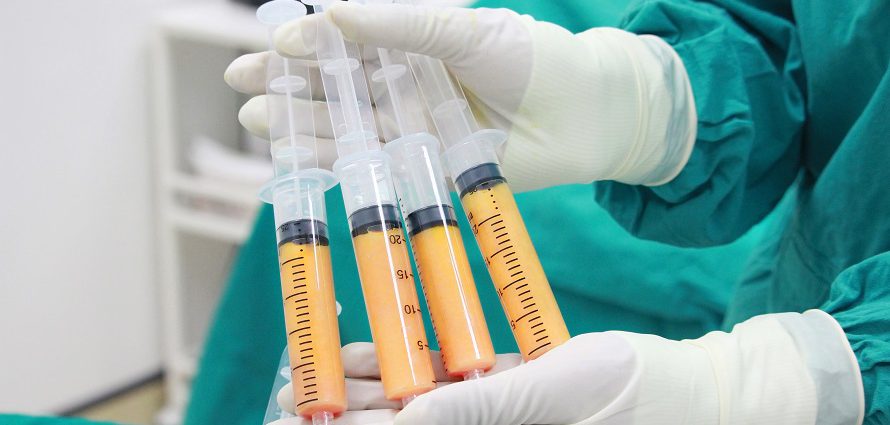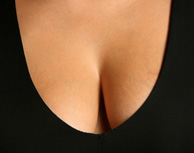Fat Grafting Breast Augmentation: A Viable Option?

Reviewed by Walter Erhardt, MD
The concept behind fat grafting to the breast is simple: Move fat cells from one part of your body where they’re plentiful (tummy, buttocks and thighs) to your breasts to enhance their shape and size.
Fat grafting — also known as autologous fat transfer or lipoinjection — was used to enhance or reconstruct breasts as early as 1895, but it wasn’t until the development of liposuction almost a century later that fat cells could be harvested efficiently. While fat grafting via liposuction is widely used today to rejuvenate the face and hands, its application for breast enhancement has lagged behind.
Clinical research into fat grafting to the breast continues, and progress is being made to better understand the benefits and risks of the procedure.
Fat Grafting Breast Enhancement Candidates
Currently, fat transfer to the breast is considered an option for women who want to improve the appearance of their breasts after reconstruction or lumpectomy to treat breast cancer, for tuberous breast correction or to repair implant-related issues like rippling and wrinkling. The procedure can also be used to soften the overall look of existing breast implants by “blurring” the line between implant and breast tissue. Potential candidates must also have adequate fat harvesting sites on their body. The American Society for Aesthetic Plastic Surgery (ASAPS) and the American Society of Plastic Surgeons (ASPS) caution women to seek fat grafting only for the purposes listed above.
Both ASAPS and ASPS strongly support ongoing research efforts to establish the safety and efficacy of the procedure for primary breast augmentation. More positive data from those efforts could well make fat grafting to the breast an option for more women in the future. Until then, traditional breast augmentation with implants and auto augmentation with breast lift are options to consider.

Fat Transfer to the Breast: The Procedure
Fat transfer to the breast involves two distinct procedures: harvesting and injecting. The fat cells are acquired through one of several types of liposuction: laser liposuction, ultrasound-assisted liposuction or water-assisted liposuction.
Once harvested through a syringe, the cells are processed for transplantation. This involves removing anesthetics, lipids and medical fluids from the fat. The goal is to obtain healthy fat cells devoid of other tissue, which increases the likelihood of successful cell transfer and reduces the chances of injecting unwanted substances with the fat. The healthier and purer the injected material, the greater the yield of viable fat cells.
After processing, the fat cells are carefully injected, drop by drop in dozens of small injections, into the space between the skin and the breast capsule surrounding the breast and/or behind the breast between the breast and chest wall. This meticulous technique enables the plastic surgeon to sculpt the breasts as desired. The medical consensus is that if the fat is injected into these areas, it will be easier to monitor long term, and to avoid many of the problems that may arise from significant fat being injected into the breast tissue itself. However, because these injection sites are limited in size, fat grafting to the breast can produce only modest augmentation.
Some surgeons help the process along by instructing their patients to wear tissue expanders prior to surgery. One such expander is the Brava System. This system creates a vacuum that applies gentle, three-dimensional pull on the breasts that’s similar to the action of a breast pump. This tension causes the cells to replicate and gradually create new tissue throughout the entire breast area.
Fat Grafting: Issues of Concern
A concern among plastic surgeons is how much fat is needed to get the job done. The consensus is that fat cells must be over-injected to compensate for any necrosis (cell death) that may occur, which results in loss of fatty tissue. Transplanted fat cells must establish a blood supply in their new location or they will die, taking any augmentation effects they may have had with them. Keep in mind that the living fat cells that remain will fluctuate with weight loss and gain, which means the area where they were injected will change size, too. Women with fat grafts to their breasts may end up with more (or less) than they bargained for if they don’t maintain their weight.
The jury is still out on whether fat grafts can obscure readings on breast X-rays or mammograms or be mistaken for early breast cancer. As it stands, all women, whether they have large breasts, small breasts or breasts with implants, require mammography to effectively evaluate their breast tissue, and the techniques used depend on individual factors. In truth, all breast augmentation surgeries pose potential problems for cancer detection. If you have implants, it’s important to let the technician know so that he or she can use the proper technique for imaging augmented breasts. You should also tell the technician if you have had fat grafting to your breasts.
Pros and Cons of Fat Transfer to the Breast
One benefit of fat transfer to the breast is that there is no risk of rejectionor allergic reaction, since the fat cells come from your own body. The procedure also allows the surgeon more latitude when it comes to shaping the breasts than saline or silicone implants do. There are no incisions; however, there are multiple small openings from the liposuction and injection procedures.
The downside of fat transfer to the breast is that the transplanted fat cells often do not survive long term. They may be absorbed by the body, liquefy, form a cyst, calcify or produce scarring within the breast tissues. If this happens, you likely will lose some volume and may develop some lumps.
Fat grafting also provides limited volume (less than a cup size) as compared to traditional implants. Infection and fat migration are possible, as are a reaction to the anesthesia and possible burns from laser- or ultrasound-assisted liposuction. Liposuction also adds the potential for creating deformities at the donor sites if too much fat is removed. There’s no guarantee of breast symmetry, and you may be generally dissatisfied with some aspect of the final results (size, shape, appearance, etc.).
Fat Grafting Breast Enhancement Cost
Fat grafting also takes longer to perform (usually multiple sessions), and recovery may take longer since both the breasts and the donor site must heal. It is more expensive than traditional breast augmentation surgery. Breast augmentation with implants runs between $5,000 and $15,000; depending on the amount of fat that’s harvested and transplanted, the final bill for your fat grafting breast augmentation will likely exceed $20,000.
The success of the procedure depends greatly on the skill and technique of the plastic surgeon performing it. If you’re interested in this procedure, consult with a few board-certified plastic surgeons who have extensive experience with this technique. Start your search for the right surgeon now.
A Word from the Reviewer
“Fat grafting to the breast is no longer experimental, but we still have lots to learn about how to make the procedure effective and efficient. Currently, board-certified plastic surgeons are using fat grafting to enhance the results of breast reconstruction and improve the shape of augmented breasts. The next step will be to determine if this can be a safe, long-lasting and cost-effective way to do breast augmentation without an implant. We’re not there yet, but as we become more successful at using fat grafting to the breast, what we learn may resolve the remaining questions and potential problems that currently limit our use of fat for breast augmentation.”
Walter Erhardt, MD


